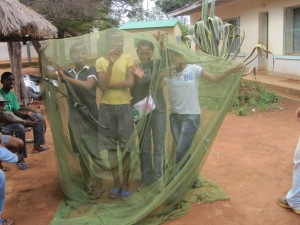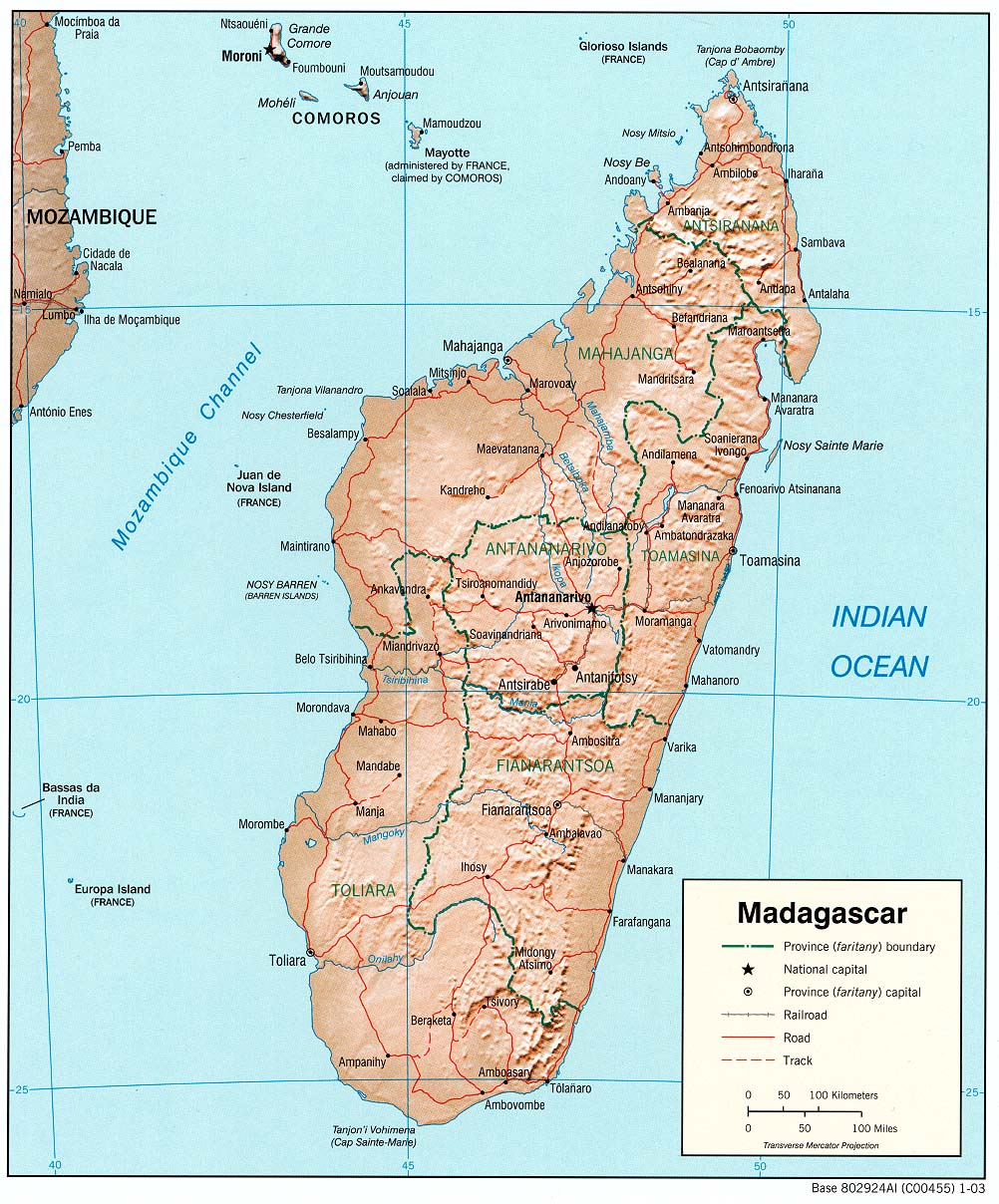When I first heard that the Peace Corps initiative Stomping Out Malaria in Africa had a vision of every Peace Corps volunteer being a “malaria volunteer”, meaning every volunteer regardless of sector would be active in malaria awareness projects, I was a bit skeptical. As a Community Health volunteer I have an obvious interest in disease prevention and eradication efforts. My job description in a nutshell is helping the Malagasy live long and healthy lives. Malaria is a very serious and often deadly disease, cutting lives tragically short. It is a public health threat of the gravest nature. Therefore, my role as a health sector volunteer naturally encompasses malaria prevention.
But although I am for obvious reasons a tad biased in favor of health volunteers, the Peace Corps family is made up of a colorful variety of volunteer sectors filling every niche imaginable. In Madagascar we currently have volunteers in four sectors – health, environment, community economic development, and English education. I knew that my fellow health volunteers would pursue the goal of eradicating malaria with gusto. But I seriously doubted the enthusiasm of volunteers in other sectors. Why would an English teacher take the time to create lesson plans about malaria? Why would an environment volunteer stop planting their garden and plan a malaria parade? Why would a community economic development volunteer halt their current project and make a mosquito piñata? Malaria is clearly a health issue, isn’t it? So doesn’t it follow that only health volunteers should be involved in the initiative?
As the Regional Malaria Coordinator for the Antananarivo area, my role the past month was recording the malaria activities of every volunteer in my region. As the phone calls, text messages, emails, and Facebook messages from volunteers rained down I came to an amazing realization. I had been completely and utterly wrong. Peace Corps volunteers regardless of their sector were engaging in malaria prevention work. There were community economic development volunteers teaching about malaria to their partner organizations, environment volunteers writing malaria awareness blogs, and education volunteers dedicating a day or even a whole week of lessons to malaria. I have a few shining examples from my region that I’d love to share.
Travis Pringle is an English education volunteer working in a town called Ankazobe. Travis teaches CEG (middle school) and LYCEE (high school) students. On April 25, World Malaria Day, Travis dedicated all of his classes to malaria awareness and prevention. His students learned malaria vocabulary, made posters about malaria prevention, practiced setting up and using mosquito nets, played games to understand malaria transmission, and made Neem Cream, a natural mosquito repellant. Not only did Travis educate his students but he also ensured that all students would be exposed to malaria prevention messages by sharing a malaria English lesson template with his fellow teachers. In that one day alone Travis shared malaria information with 499 students. That’s 499 students who are more likely to live malaria-free lives.
In Sandrandahy English education volunteer Carolyn Cella and community economic development volunteer Amy Wallace teamed up to plan four days of interactive lessons to be delivered to all of Carolyn’s students. The lessons they created combined English education with essential malaria messages. The first day was dedicated to learning malaria basics such as cause, symptoms, danger signs, and treatment as well as essential vocabulary in English. The second day the students were asked to draw upon what they learned the previous day to create malaria awareness posters with messages in both English and Malagasy. The third day the students worked in groups to write brief speeches or dialogues about their completed posters. And on the final day the students gave their speeches or read their dialogues in front of other classes. The students went from receiving the information on the first day to actually sharing the information with others, becoming teachers themselves, on the last day.
Travis, Carolyn, and Amy are just a few examples of volunteers dedicating themselves wholeheartedly to the Stomping Out Malaria in Africa initiative. And they serve as proof that every volunteer can indeed be a “malaria volunteer” regardless of their sector. After all, improving lives is a goal that transcends sector classifications and unites all Peace Corps volunteers. Shame on me for being a doubter in the beginning. But I’m quite happy to have been proven wrong.



Apr 30, 2013 @ 22:06:16
I love hearing your stories, which are not only educational, but thoroughly fascinating. Thank you, dear Kim!